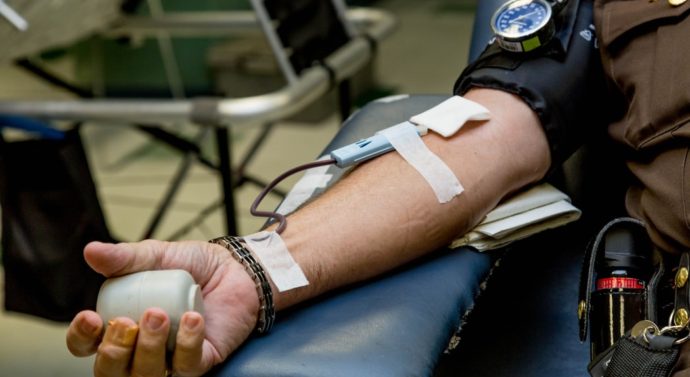
Donating blood on campus: The upcoming drive by Community Blood Center of the Ozarks and what to know before donating
Campus News, Community February 14, 2020, Comments Off 53On Tuesday, Feb. 18, Drury will host a blood drive by the Community Blood Center of the Ozarks. The Mirror reached out the blood center to learn more about the organization, blood drives, and find out who can and can’t donate.
Community Blood Center of the Ozarks
2020 marks the 25th anniversary of the Community Blood Center of the Ozarks (CBCO). Since 1995, CBCO has devoted itself to “the collection, processing, and distribution of blood into local hands,” in the words of CBCO’s media representative Chris Pilgrim.
CBCO is a not-for-profit organization that collects funding through fees paid by area medical facilities.
“When the organization was conceived, the goal was to put the collection, processing and distribution of blood into local hands,” said Pilgrim. “Area leaders thought that by doing that, they could manage a precious resource on a truly local level, meeting local needs at a cost that would be less that their current system. It turned out to be a smart move.”
Pilgrim also pointed out that CBCO provides blood and plasma for patients at over forty area hospitals. The cost for all this blood and plasma consistently ranks among the lowest in the nation. Part of the low cost comes from the fact that most patients in the area receive blood from local donors, part of a principle Pilgrim summed up with the slogan “Local patients, local donors.”
CBCO operates under the strict guidelines of the Food and Drug Administration.

(Photo via pixabay.com)
Why donate at blood drives?
There are four CBCO donation centers in the Ozarks region, but most donations come from drives to schools, churches and businesses.
“Area high schools, colleges, and universities are of special note,” said Pilgrim. “We get around one third of our total donations for the year from students. We’re supplying local patients while at the same time introducing young people to the great things they can do with just an hour of their time. We hope to create donors for life.”
Pilgrim stressed the importance of blood coming from the community. “We are the true local providers of blood for our region. If a friend or family member needs blood, it simply has to come from area blood donors.”
Pilgrim also addressed some concerns that many college-age potential donors have that prevent them from donating.
“Needles are sometimes scary, but just think of a cancer patient waiting for that next transfusion. Or the motorcycle accident victim in an area trauma center. Talk about frightened.”
Statistically, Pilgrim pointed out, if you live to age 70 there is a strong chance you will need blood at some point. “Our job then,” said Pilgrim, “is to make certain that the right kind of blood is on the shelf when it is needed.” He went on to illustrate that a big part of CBCO’s goal is to raise awareness of the necessity for blood donations, stating that most people who have never donated simply don’t because they have never been asked.
Controversy surrounding donor bans
In the late 80s, confusion and fear surrounding the AIDS crisis led to some drastic changes to blood donation guidelines. HIV was much less understood than it is today, and in an effort to limit the spread of the virus, America’s Blood Centers and the American Red Cross adopted the MSM deferral, which placed a lifetime ban from donating blood on males who have ever had sex with another male.
“In 2015, these rules were relaxed somewhat, reducing the previous lifetime ban on men who have had sex with other men (MSM) to a period of a year,” Pilgrim explained.
Improved detection and testing methods have made it easier to identify HIV and AIDS in the 21st century, something that critics of the MSM deferral point to as evidence the ban should be lifted entirely.
“There are a number of things that may result in a donor deferral,” Pilgrim pointed out. “World travel, certain medicines you are taking, lifestyle history and past or current diseases are all categories that may affect a person’s ability to donate.”
To check if you are eligible to donate before CBCO comes to Drury’s campus on Feb. 18, visit http://www.cbco.org/can-i-give/. In December of 2019, there was a low supply and high demand of type O negative blood.
Written by Forest Swisher.